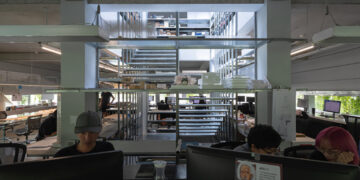Introduction OMA’s Vision for the Dutch Parliament Extension

The proposed extension for the Dutch Parliament by the Office of Metropolitan Architecture (OMA) challenged traditional architectural norms by embracing postmodernism. Led by Rem Koolhaas, OMA’s design aimed to symbolize the evolving history of the Parliament complex in The Hague, rejecting imitation in favor of a bold, contemporary approach.

Historical Context: The Binnenhof Complex
Situated in the heart of The Hague, the Binnenhof complex holds centuries of architectural history, serving as the Dutch Parliament’s meeting place. From its medieval origins to its role in modern governance, the Binnenhof represents a fusion of architectural styles spanning six hundred years.
Design Elements: A Trio of Innovations
OMA’s proposal comprised three distinct elements designed by Zaha Hadid, Elias Zenghelis, and Rem Koolhaas. Hadid envisioned a tall, narrow office block, while Zenghelis proposed a glass-brick public forum. Koolhaas contributed an irregular tower, creating a dynamic ensemble that challenged traditional spatial relationships.

Spatial Organization: A Nexus of Public and Political Activity
Zenghelis’ public forum served as the primary space for political engagement, featuring meeting rooms and an elliptical tower for the press. Hadid’s Parliament block, adjacent to the forum, housed political parties and parliamentary managers. The assembly room, symbolizing unity between government and the public, bridged the two structures.

Architectural Symbolism: Integration and Transformation
The assembly room’s placement atop the public forum symbolized connectivity and transformation, bridging past and present. Koolhaas’ towering structure, detached yet interconnected, added verticality and complexity to the ensemble, respecting the Binnenhof’s architectural evolution.

Conclusion: A Visionary Proposal
OMA’s proposal for the Dutch Parliament extension, though unrealized, remains a testament to innovative design thinking. By rejecting imitation and embracing contemporary expression, OMA offered a glimpse of the Binnenhof’s potential future. As the complex continues to evolve, OMA’s visionary proposal sparks dialogue about architectural continuity and transformation.





























